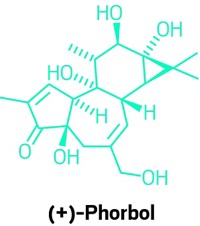Advertisement
Grab your lab coat. Let's get started
Welcome!
Welcome!
Create an account below to get 6 C&EN articles per month, receive newsletters and more - all free.
It seems this is your first time logging in online. Please enter the following information to continue.
As an ACS member you automatically get access to this site. All we need is few more details to create your reading experience.
Not you? Sign in with a different account.
Not you? Sign in with a different account.
ERROR 1
ERROR 1
ERROR 2
ERROR 2
ERROR 2
ERROR 2
ERROR 2
Password and Confirm password must match.
If you have an ACS member number, please enter it here so we can link this account to your membership. (optional)
ERROR 2
ACS values your privacy. By submitting your information, you are gaining access to C&EN and subscribing to our weekly newsletter. We use the information you provide to make your reading experience better, and we will never sell your data to third party members.
Oncology
From the archives: The 1990s
The race to make paclitaxel
by Alexander H. Tullo
October 30, 2023
| A version of this story appeared in
Volume 101, Issue 36

Perhaps the biggest challenge of organic synthesis in the 1990s was finding a route to produce significant quantities of paclitaxel, also known by the trade name Taxol. The compound, extracted from the bark of the Pacific yew tree, showed promise back in the early 1960s as an anticancer compound. And in the 1970s, chemists worked out the structure of the drug and a possible mechanism that allowed it to slow cancer cell growth. But by the 1990s, the exotic origin of paclitaxel proved to be a serious impediment to clinical trials and subsequent commercialization. C&EN reporter Stu Borman, in a 1991 cover story, explains the dilemma: “Based on current bark-extraction procedures, NCI [the US National Cancer Institute] estimates that it takes about three trees to provide enough drug to treat one cancer patient. In addition, the trees must be killed to harvest the bark.” Producing paclitaxel from the yew trees would be a considerable environmental burden. Moreover, the complicated structure of the molecule didn’t yield to organic synthesis easily. Scientists investigated analogs of the molecule that might work about as well, alternative sources of paclitaxel, paclitaxel production via a biological route, and partial synthesis based on more plentiful biological precursors, and they even attempted full synthesis. All these routes met with some success, but a partial synthesis based on a molecule extracted from the needles of the more common and fast-growing English yew shrub won out for Bristol Myers Squibb’s early commercialization of Taxol, which became a blockbuster drug. In the aughts, this route was supplanted by a plant cell fermentation process.






Join the conversation
Contact the reporter
Submit a Letter to the Editor for publication
Engage with us on Twitter